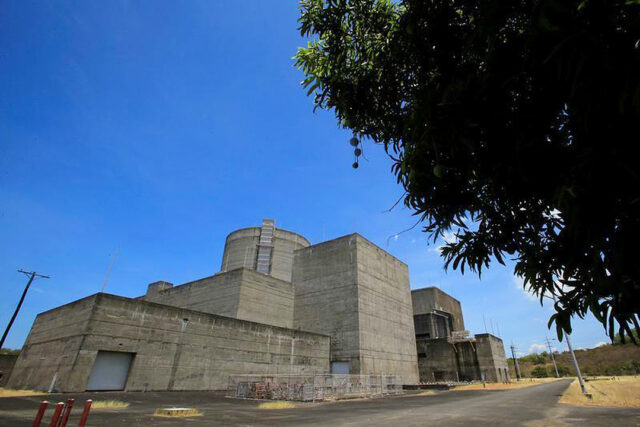No decision on BNPP; gov’t evaluating modular reactors
By Tobias Jared Tomas – June 23, 2022 | 8:06 pm
Business World

REUTERS
THE Climate Change Commission (CCC) said studies are still ongoing to determine the fate of the Bataan Nuclear Power Plant (BNPP), in compliance with the executive order (EO) that gave the go-signal for tapping nuclear power.
“We are aware that based on the EO, studies still have to be undertaken. That’s why we are also engaging our experts here, along with other national agencies” to ensure the appropriate policy that accords with scientific opinion, CCC Policy Research and Development Division Chief Jerome E. Ilagan said during the Second Virtual Philippine Life Insurance Summit on Thursday.
President Rodrigo R. Duterte signed EO No. 164 in February, authorizing the exploration of nuclear power as a possible addition to the energy mix.
In 2020, the Philippines’ power mix consisted of 57% coal-fired, 21% renewable energy (RE), 19% natural gas, and 2% oil.
Michael O. Sinocruz, the Department of Energy’s (DoE) Energy Policy and Planning Bureau officer-in-charge and director, said EO No. 164 has also triggered studies on the development of small modular reactors with capacity of about 50 megawatts.
Mr. Sinocruz said that compared to other sources of energy, nuclear energy is among the cheapest options, but will require significant spending to ensure safety.
“If you are going to compare nuclear with other energy sources, nuclear is the cheapest, but because of the additional safety measures (to be undertaken) due to Fukushima, the capital cost increased slightly, so now they are at roughly the same level with coal in terms of cost,” he said.
He added that when all costs are considered for nuclear, coal remains cheaper and its disadvantages can be mitigated by more efficient low-emission technology, which promise lower carbon dioxide emissions.
The DoE will implement the National Renewable Energy Program (NREP) 2020-2040 within the year. NREP sets a target of 35% renewable energy in the generation mix by 2030, driving this further to 50% by 2040.
About $153 billion in investment is needed, with $94.3 billion going to the construction of RE power plants and $510 million needed for renewable energy pre-development activities.
Mr. Sinocruz said that there were also currently talks with the Star Scientific Ltd., of Australia and Tokyo-based Hydrogen Technology, Inc. to introduce hydrogen as an alternative energy source.
Mr. Ilagan said the Philippine pledge to reduce greenhouse gas emissions by 2030 as part of the Paris Agreement on Climate change should not serve as a deterrent to seeking out other energy sources, adding that the country needs to get “creative.”
“Based on what we call the carbon budget, we still have space to emit (greenhouse gases),” he added. “But in the solidarity with the world, and since we also suffer when greenhouse gases go up, we commit to lowering future emissions; but we ask: give us support in terms of technology, capacity, and finance.”


